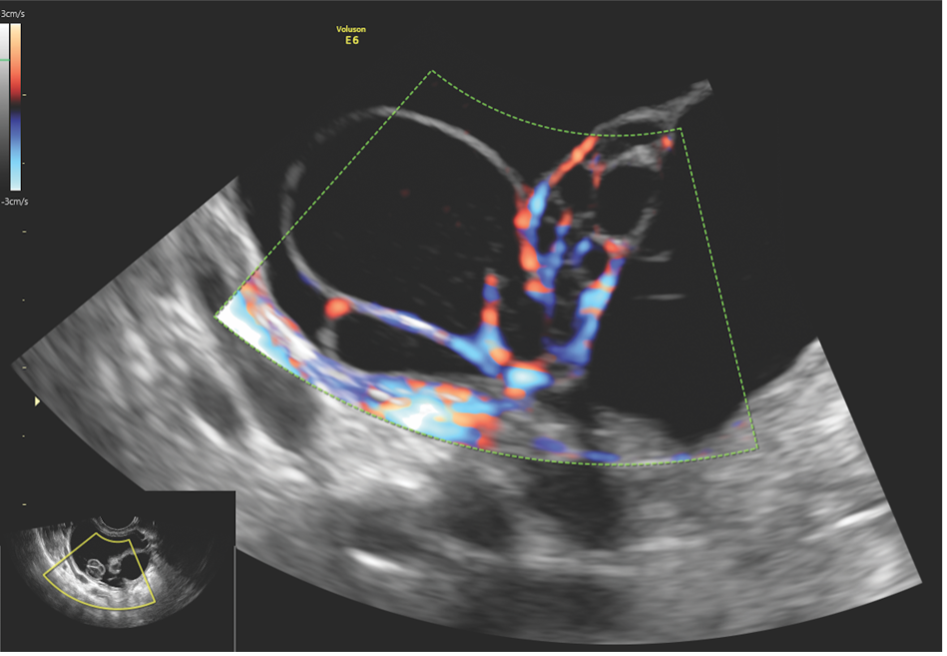The ovarian cancer treatment landscape has changed dramatically in the past few years with the advent of poly (ADP-ribose) polymerase inhibitors, or PARP inhibitors. This new drug protocol is quickly becoming a first-line treatment for cancers that have previously been difficult to treat. PARPi protocols along with ultrasound monitoring may be an option to improve your patients' prognosis.
How PARPi Protocols Are Changing Ovarian Cancer Treatment
For decades, treatment for ovarian cancer has involved surgery and six to eight weeks of chemotherapy. In 2011, the anti-angiogenic drug bevacizumab was added to treatment protocols. Unfortunately, most patients eventually become resistant to chemotherapy and suffer multiple relapses, with a five-year survival rate of only 45 percent, according to The American Family Physician.
In the past decade, PARP inhibitors have significantly improved ovarian cancer treatment. PARP enzymes play a key role in repairing DNA damage in both single-strand and double-strand breaks, according to a review published in Annals of Oncology. Tumor cells with BRCA 1/2 mutations already exhibit a high level of chromosomal instability and are unable to properly repair double-strand breaks in DNA. PARP inhibitors are thought to work by blocking the PARP enzymes the cells use to repair themselves after damage by chemotherapy. While the biggest benefit is seen in patients with BRCA mutations, these drugs work in other patients as well. Three distinct PARP inhibitors — olaparib, niraparib and rucaparib — have been approved as maintenance therapy for platinum-sensitive recurrent ovarian cancer, according to the Annals of Oncology review.
Examining Key PARPi Clinical Trials
Three new clinical trials were presented at the European Society of Medical Oncology (ESMO) 2019 annual meeting that suggest that PARPi is moving into first-line therapy for ovarian cancer. This trio of trials shows promising results for niraparib, olaparib and veliparib protocols for a variety of cancer patients. While an earlier trial presented in 2018 showed outstanding progression-free survival with olaparib maintenance therapy, that study only examined BRCA patients with advanced ovarian cancer.
The new trials presented at the ESMO meeting show that patients without a BRCA mutation also benefit from PARPi. PRIMA, the results of which were published in the New England Journal of Medicine, was the first trial to use a PARP inhibitor, niraparib, in patients with newly diagnosed ovarian cancer both with and without a BRCA mutation. Niraparib was given as monotherapy after first-line platinum chemotherapy and significantly improved progression-free survival (PFS).
The PAOLA1 trial looked at adding olaparib to the current standard treatment of platinum-based chemotherapy and bevacizumab. It found that olaparib also improved PFS. The third trial, VELIA (also published in the New England Journal of Medicine), studied a protocol of veliparib added to chemotherapy followed by veliparib maintenance, compared to veliparib with chemo followed by a placebo for maintenance. The best outcome was seen in the group who were prescribed veliparib both alongside chemotherapy and for maintenance.
How Ultrasound Can Help Monitor Ovarian Cancer Treatment
Ultrasound is already regarded as a critical tool for determining the malignancy of adnexal masses. Now, it can help clinicians monitor the effectiveness of treatments such as PARP inhibitors. In a niraparib trial published in the journal of the Society of Gynecologic Oncology, researchers used transabdominal ultrasound to monitor the drug's effectiveness and observe changes to the carcinoma in vivo.
Transvaginal ultrasound and transabdominal ultrasound are a critical part of not only ovarian cancer screening, but also the morphological evaluation of ovarian cancer, according to a study published in Theranostics. The addition of color Doppler allows physicians to visualize the vascularity of ovarian masses, and to detect any concerning changes.

Ovarian Mass rendered with Voluson HDlive™ Studio

Ovarian mass vascularity shown with Voluson™ HD-Flow™
PARP inhibitor trials are a major breakthrough in ovarian cancer treatment. Future trials will help narrow down the most effective way to integrate PARP inhibitors with existing treatment protocols. While this research is underway, OB/GYNs should continue to rely on ovarian cancer education and ultrasound monitoring to help guide patients toward the best possible prognosis.


